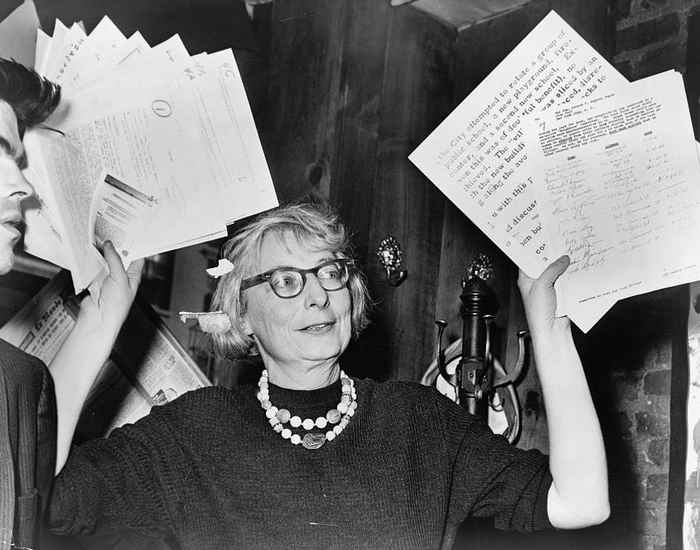Jane Jacobs: Planning Guru or Planning Gorilla? - By Nanke Verloo
Director and former director of the Amsterdam Planning Bureau Jos Gadet and Zef Hemel refer to Jacobs extensively in their strategies for the future of Amsterdam and blogs. Jacobs seems to be the Guru of Amsterdam planning. But when I look at recent projects, I observe that Amsterdam seems to selectively choose some of Jacobs’ lessons and neglects others.
Now lets watch this movie to test our own selective attention.
Did you see the Gorilla? Or did the gorilla escape from your selective gaze? I wonder, ‘Do we use Jacobs as a Planning Guru or Planning Gorilla?’
Diversity
A central element of a great city is diversity. Jacobs’ argues for diversity in terms of class. In structural vision for the future Amsterdam, planners strategically mentions an increase of 11 to 30 percent of homeowners at the expense of social rental housing between 1995 and 2009. Are we selectively choosing Jane as a Guru for her general ideas on diversity, but as a Gorilla to superficially legitimize far-reaching policies that push the poor out and the rich in? Let’s look at ‘diversity in terms of functions’. Jacobs seeks to foster diversity of retail and commerce. The 1012 project seemed to take that lesson as it tried to push out low quality and homogenous sex functions from the red light district. But instead of attracting functions that would foster the neighborhood– like a butcher or a bakery – the result of the policy is a multitude of cheese and Nutella stores that have no neighborhood function what so ever.
Then diversity in terms of gender? Professor Hemel argued that, ‘Jane symbolizes the so-called ‘feminine side’ of planning that is the contemporary dominant view on planning’. UvA scholar Marguerite van der Berg showed how planners co-opt Jacobs as a Guru in projects which ‘genderfy’ urban neighborhoods by attracting dual earning families that seem to make the city less sexist but attract a very particular kind of women and excludes another. When looking at our current strategies in terms of diversity, I think we could say that Jane is used as a Guru if it comes to attracting one kind of people, but as a Gorilla when it comes to another.

Public Space
Another salient topic for Jacobs’ lessons is public space – there should be movement and have a public character. New neighborhoods like Overhoecks in the North seems to make use of Jacobs as Guru in terms of producing large public spaces. But as a Gorilla in terms of the design of the housing blocks – the apartments have large interior gardens that are closed off with high fences. What happens in the A’dam tower is far fetched from what happens at the street. Jacobs’ ideas are again the result of a peculiar practice of selective attention. Then the experiments to make public spaces more user friendly – for example the bike free zone for pedestrians in the Eerste van der Helstraat. The experiment seeks to increase movement and contact using Jacobs’ as a Guru, but the idea of process is a Gorilla. Jacobs’ idea is to start planning approaches from knowledge that is embedded in the nitty gritty of everyday life. She would do long-term observations of how people actually use these spaces in their everyday routines. Instead, bike restrictions were put in place and immediately heavily policed. Hence, the idea celebrates Jacobs as a Guru but the process is a Gorilla.
Activism
This brings me to my last lesson. When it comes to activism the Amsterdam citizen seem to use Jacobs as a Guru. They do not easily swallow the master plans for bridges, hotels or red carpets. The Amsterdam citizen fiercely rejects top-down planning. And if they don’t reject, they informally resist restriction by simply not following them.
Thus, when you look at plans and policies for your own neighborhood, ask yourself this:Which facade always gives you a spark of happiness? What green strips do you prefer to use and which not? How do you know to not take that street but the other at five to 9 in the morning? These seemingly everyday things are knowledge that makes our city ours. It is attention to this knowledge that makes Jane Jacobs a Guru for todays planning, but it is also this knowledge and community life that is easily disrupted if Jacobs turns out to be the Gorilla of selective attention.
Nanke Verloo is Assistant Professor in Urban Planning and does research into the role of conflict in urban governance.